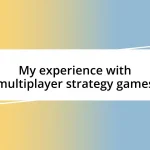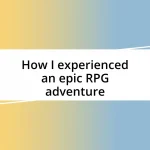Key takeaways:
- Effective preparation and understanding of rules can transform anxiety into excitement during the first game experience.
- Winning strategies include route optimization, observation of opponents’ tactics, and strategic use of wild cards for decisive moments.
- Adapting gameplay based on changing circumstances and assessing opponents’ strategies are crucial for overcoming challenges and enhancing overall performance.

Preparing for your first game
As I prepared for my first game of Ticket to Ride, I felt a blend of excitement and anxiety bubbling within me. It was a completely new experience, and I couldn’t help but wonder, would I grasp the rules quickly enough? Familiarizing myself with the game board and understanding the routes beforehand helped ease my nerves.
In the days leading up to the game, I spent time watching tutorial videos and practicing strategy in my mind. Visualizing my moves and thinking through potential challenges made me feel more confident. Have you ever found that just a bit of preparation can shift the balance from fear to excitement? I definitely did.
On the game day, I gathered my friends, and we decided to start with a quick overview of the rules together. Watching them share their first impressions reminded me how much fun it is to learn something new collectively. There’s something magical about sharing that moment—everyone’s laughter and playful banter transformed any lingering nerves into sheer joy.
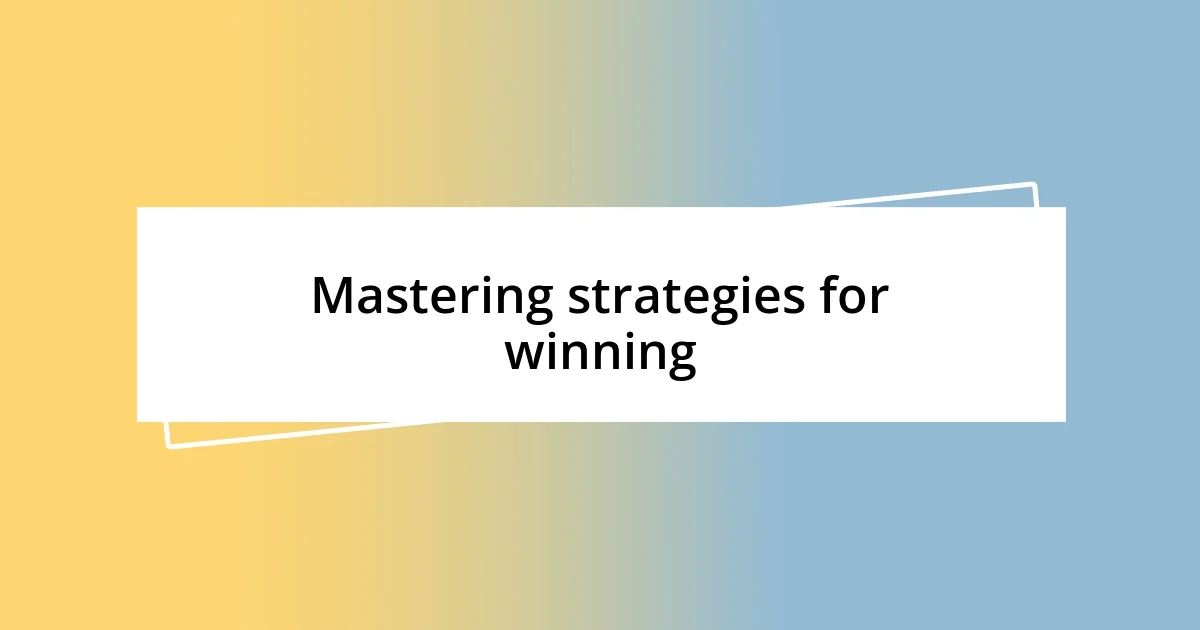
Mastering strategies for winning
Mastering strategies for winning requires a thoughtful approach, and I’ve learned that my understanding of route optimization can make a huge difference. I vividly remember my first game when I made the mistake of spreading my trains too thin, chasing multiple goals instead of focusing on completing longer routes. Have you ever felt overwhelmed by too many options? Learning to prioritize routes that connect longer destinations not only maximizes points but also limits opponents’ options.
Another crucial aspect of winning is observing your opponents closely. I discovered that noticing their strategies often gave me an edge. In one match, I watched a friend desperately try to block me, which allowed me to pivot my plans and secure victory unexpectedly. This experience taught me that sometimes it’s not just about your strategy; it’s about how well you adapt to the game dynamics that others create around you.
Finally, I came to appreciate the importance of holding onto wild cards for as long as possible. I recall a thrilling game where I saved my wild cards until the last round, enabling me to claim a key route that my opponents overlooked. The thrill of that last-minute strategy is something I’ll never forget; it transformed a tense moment into pure exhilaration.
| Strategy | Description |
|---|---|
| Route Optimization | Focus on completing longer routes to maximize points and limit opponents’ options. |
| Observing Opponents | Watch opponent strategies to adapt your own plans and seize opportunities. |
| Holding Wild Cards | Save wild cards for critical moments to gain a decisive advantage. |

Analyzing popular game variations
When diving into the various game variations of Ticket to Ride, I quickly realized how different rules can drastically change the game’s dynamics. I had the opportunity to explore the Europe edition, which introduced tunnels and ferries, adding layers of complexity and excitement. The rush I felt trying to complete a tunnel route, not knowing if I’d need to draw extra train cards, was both thrilling and a little nerve-wracking. It made me appreciate how variations can cater to different play styles—some players thrive on challenge, while others enjoy a more straightforward experience.
- Ticket to Ride: Europe: Introduces tunnels and ferries, enhancing strategic options.
- Ticket to Ride: Nordic Countries: Perfect for smaller groups, emphasizing quick gameplay.
- Ticket to Ride: Germany: Incorporates a unique “additional scoring” mechanic that keeps everyone on their toes.
- Ticket to Ride: Legacy: An evolving narrative where decisions made in one game affect future sessions, creating a deeper emotional investment.
In reflecting on these variations, I find that they not only engage my competitive spirit but also foster memorable moments with friends. I remember one late-night session where we tried the Legacy version; our laughter echoed into the night as we witnessed our train maps evolve together—everyone’s altering plans made it feel like a collaborative adventure, rather than just another game. It’s fascinating how different variations can highlight collaboration and competition in unique ways.
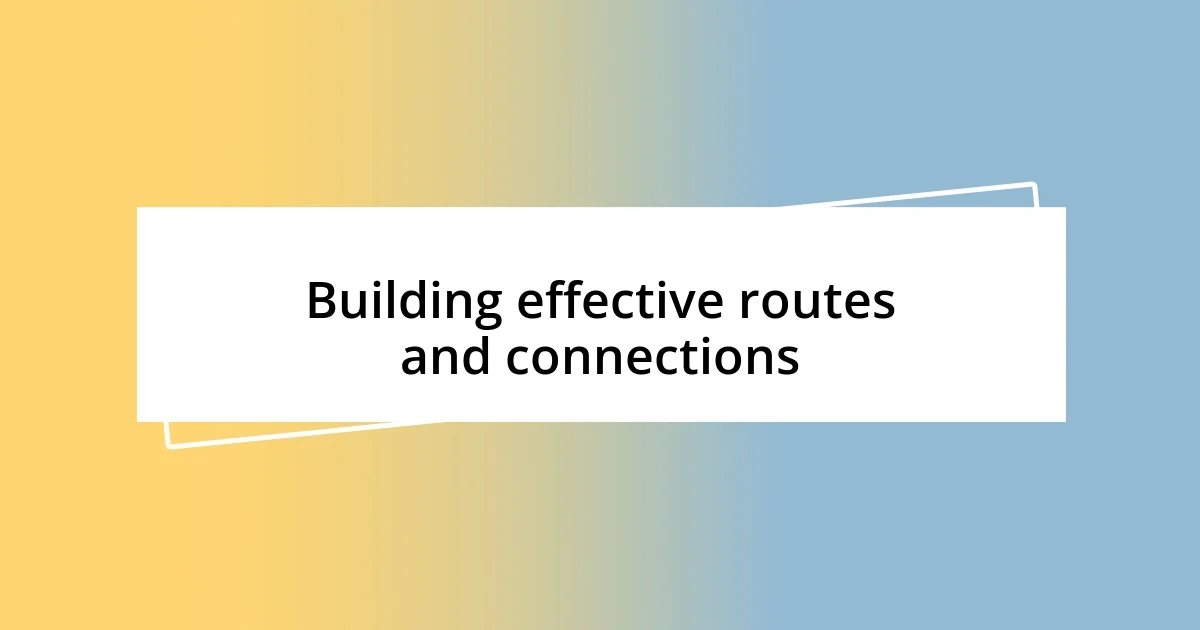
Building effective routes and connections
Building effective routes and connections is all about precision and foresight. I remember an intense game where I focused on a key connection between two cities that my opponents weren’t considering. By prioritizing that strategic route, I not only secured points but also limited their options, making them rethink their entire approach. Have you ever watched the way your plans can shift the entire game?
I’ve found that creating connections isn’t just about picking the shortest paths; it’s about anticipating others’ moves. In a memorable match, I noticed a player eyeing a crucial route I needed. Instead of panicking, I diverted my attention, targeting a less obvious but equally beneficial pathway. This moment taught me that sometimes, adapting your strategy can be more powerful than sticking rigidly to the original plan. How often do you reassess your routes as the game unfolds?
Lastly, I discovered the beauty of long-term planning in route building. There was one game where I connected distant cities, laying the groundwork for high-value routes. It took patience and careful card management, but ultimately, the payoff was worth it. This experience reinforced my belief that the best players balance relationships between immediate gains and future possibilities. How do you approach blending short-term and long-term strategies in your gameplay?
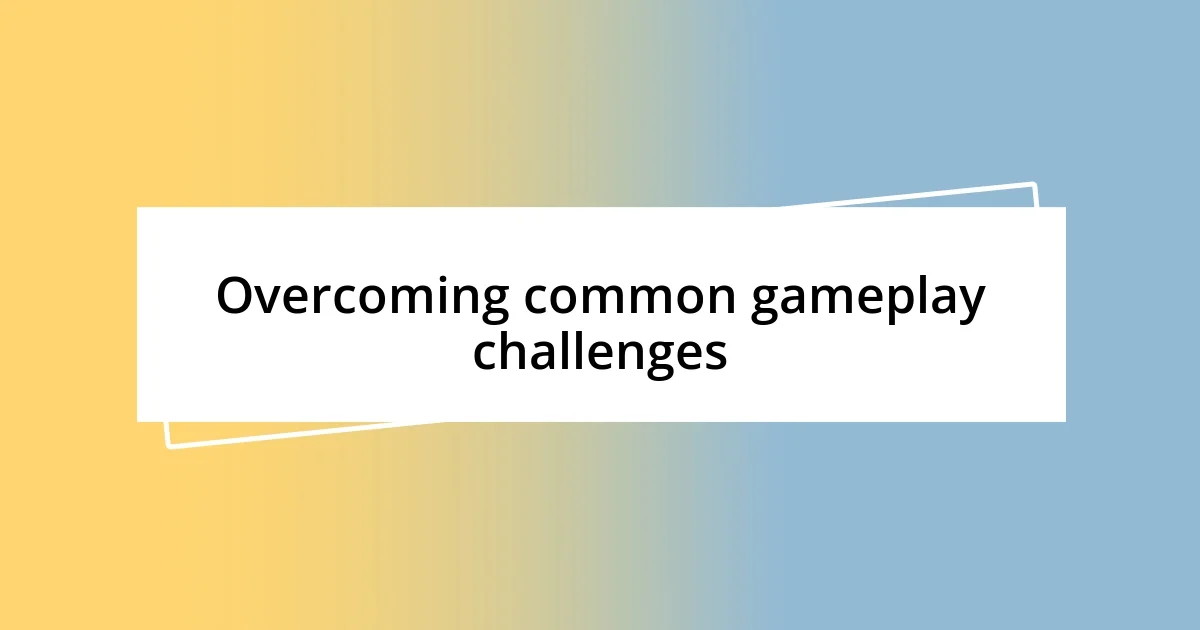
Overcoming common gameplay challenges
When it comes to overcoming common challenges in Ticket to Ride, I’ve often grappled with the frustration of blocked routes. There was a particular game where I confidently aimed for a long-distance destination, only to find my opponents had snatched up crucial tracks right before my turn. It felt like a punch to the gut, but it reminded me of the need to stay adaptable. Have you ever found yourself pivoting at the last minute to seize an unexpected opportunity?
Card management can also be a significant hurdle. I vividly recall a game where I hovered with just a handful of train cards left, desperately hoping to draw what I needed. Instead of panicking, I shifted gears—rather than fixating on completing one lone route, I pivoted to building smaller connections. The adrenaline rush of crafting a new strategy on the fly was invigorating. What strategies do you employ when your card luck seems to falter?
Another challenge lies in assessing opponents’ strategies, which I’ve found to be both daunting and enlightening. During one game, I noticed a player hoarding cards for high-value routes while I sat idly, focused on my own plans. It was an eye-opener! I learned that keeping an eye on others is not about being paranoid but rather about gathering insights that can enhance my strategy. Have you ever felt the satisfaction of outsmarting an opponent by anticipating their moves?



